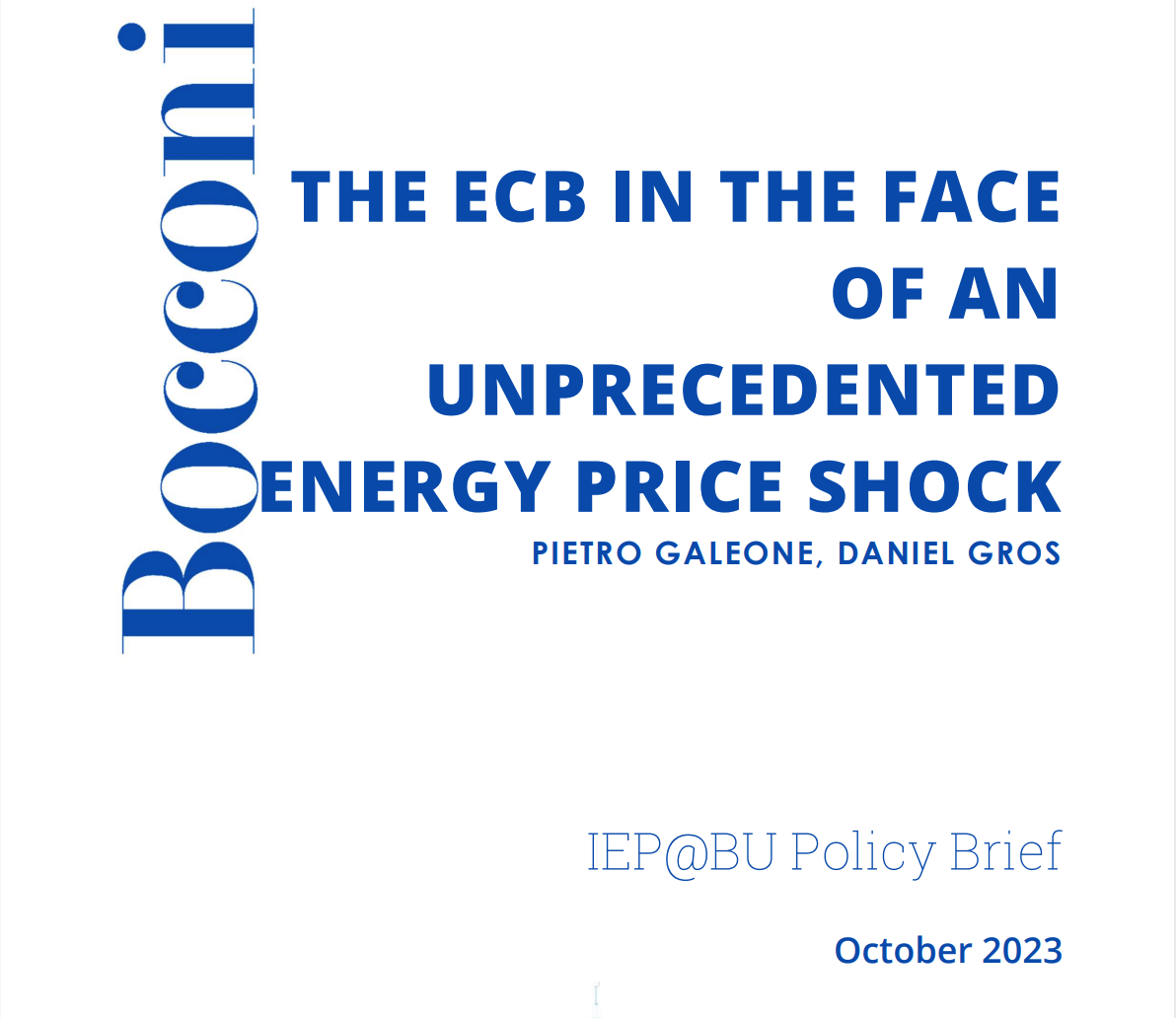Policy Brief n.5 - The ECB in the Face of an Unprecedented Energy Shock
Our starting point was the stark increase in non-energy price inflation, which is the key element for the ECB since monetary policy cannot do anything about energy prices. Could the ECB have foreseen this development? Our analysis suggests that this would have been difficult based on past experience.

In 2022 the ECB seemed helpless in the face of an unprecedented energy price shock as euro area inflation neared 10 %. However, the attention on energy prices has obscured the fact that the real surprise was that all other prices, the so-called core inflation, also started to increase at unprecedented rates, reaching 7 % at its peak. Should the ECB have seen this increase in core inflation coming?
We answer this question by emphasizing the difference between hindsight and the information the ECB had at the time of the energy price shock. We show that a model trained only on data until end-2021 would have predicted a much smaller increase in core inflation even with the extraordinary increase in energy prices that materialized in mid-2022. The relationship between energy and core inflation thus changed over the last 2 year. Not surprisingly, a model estimated on a period that includes data up to mid-2023 would have been able to predict the recent movements of core inflation (and thus overall inflation).
Additionally, we show that core inflation is normally stickier during periods of high growth, and a bit less responsive to energy price shocks when they put downward pressure. This might in part explain some of the delay the EA is experiencing in the speed of disinflation compared to the inflationary steepness of the spike.
To provide a formal test whether the 2022-2023 period was exceptional and unpredictable, we use a Markov autoregressive switching model, which suggests indeed there has been a shift in several aspects of core inflation behavior: its magnitude, its rate of change and its stickiness as well as its responsiveness to energy prices.
Using the coefficients from the updated model we then simulate the path of core inflation up to 22024 finding that core inflation should rather quickly approach the policy target of 2%, assuming that energy prices continue to fall slowly.
IEP@BU does not express opinions of its own. The opinions expressed in this publication are those of the authors. Any errors or omissions are the responsibility of the authors.

